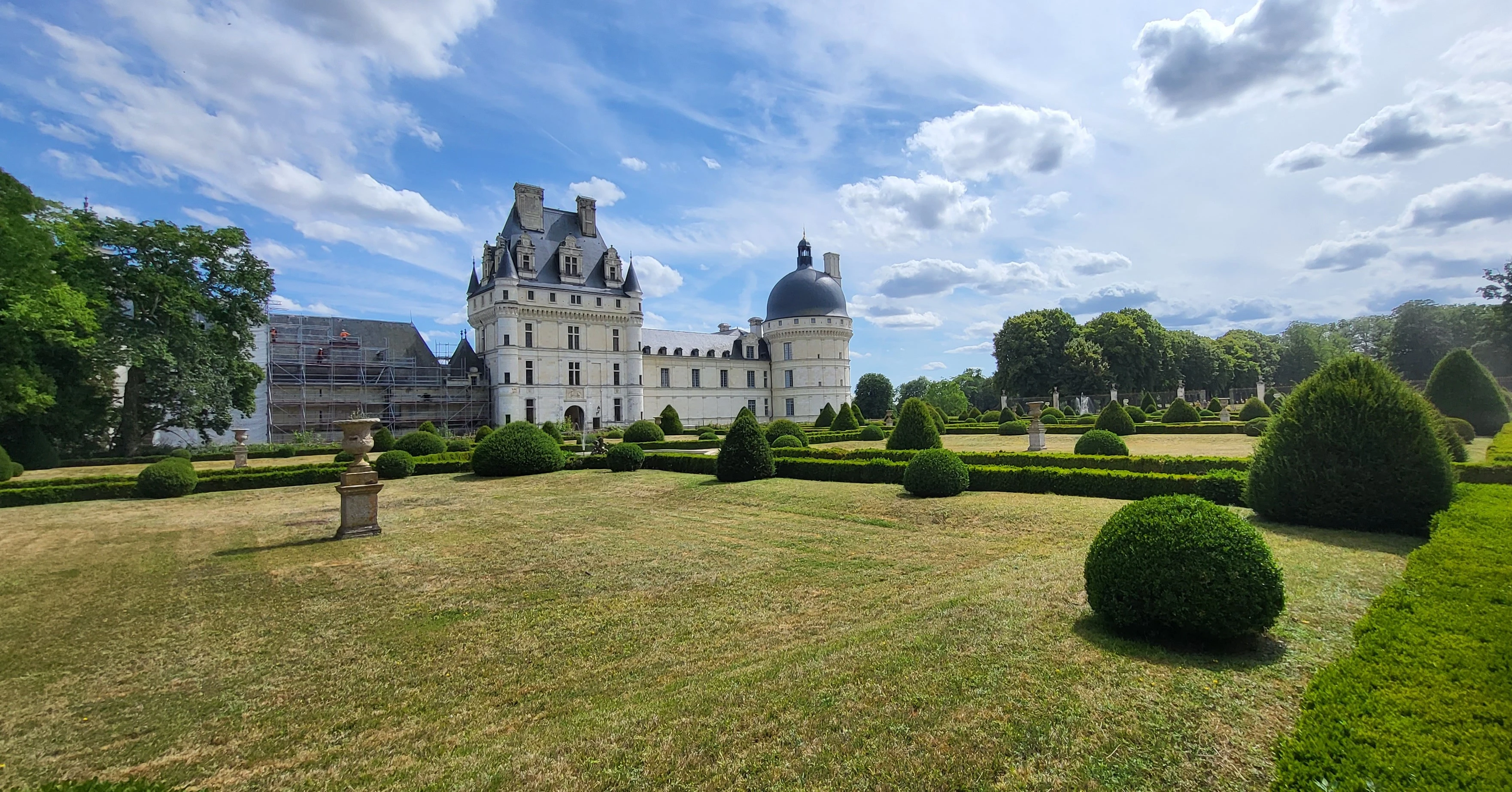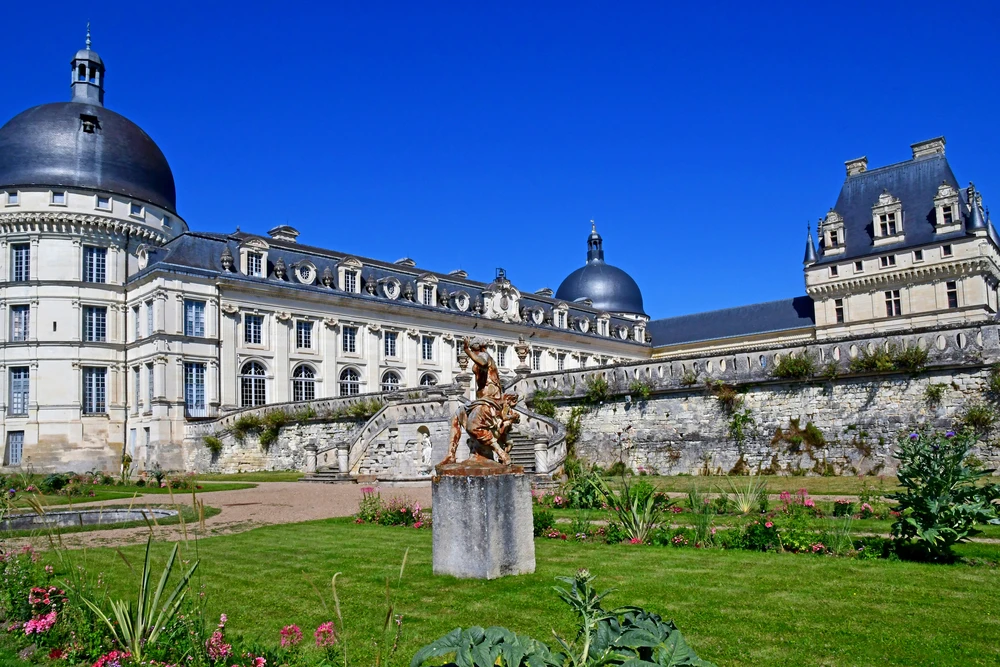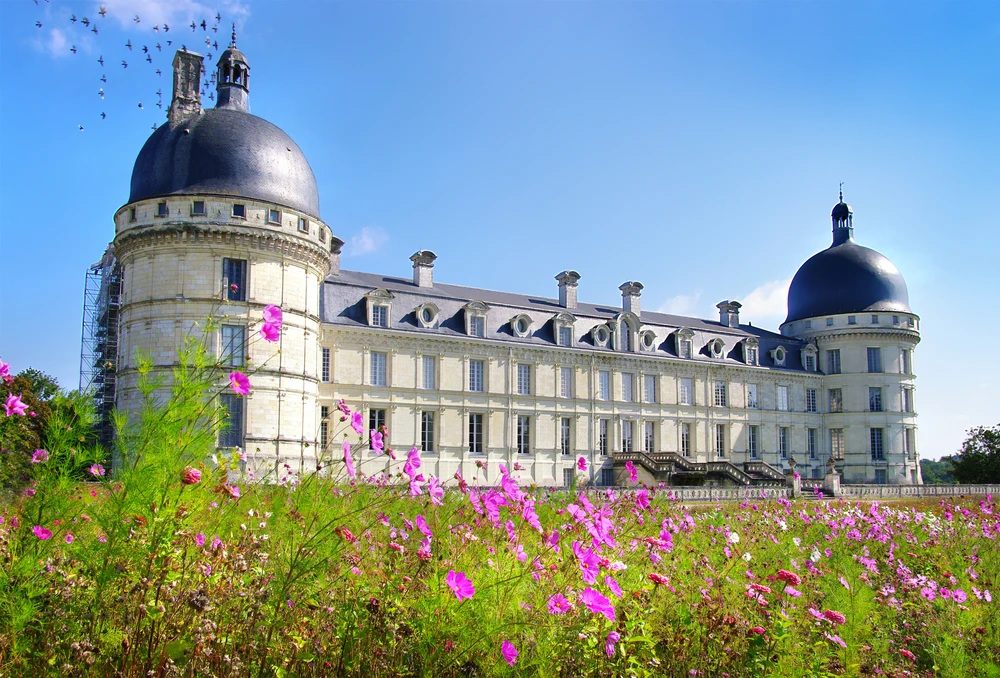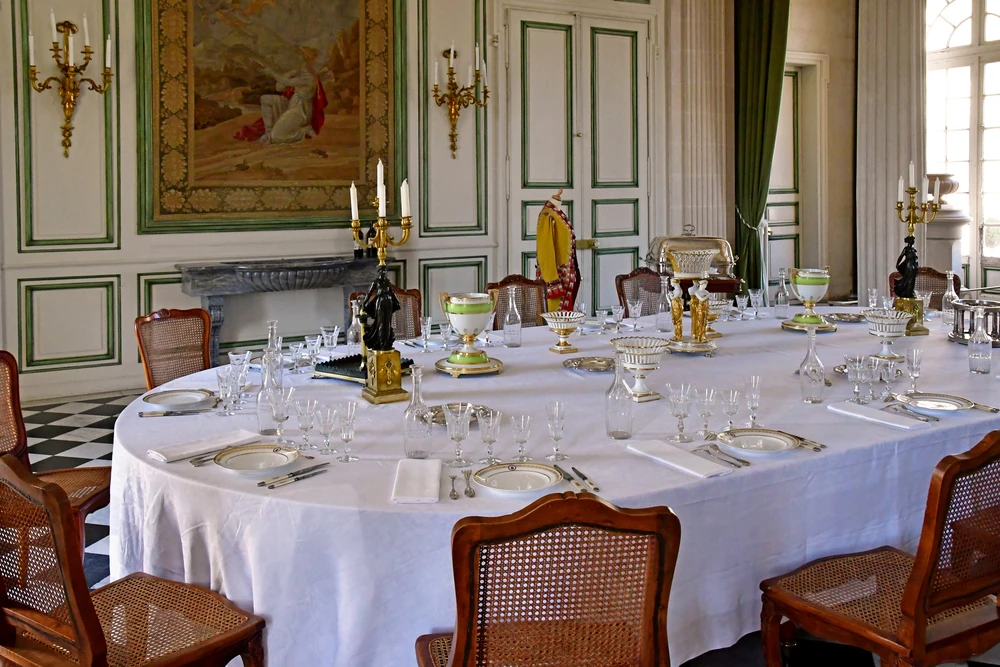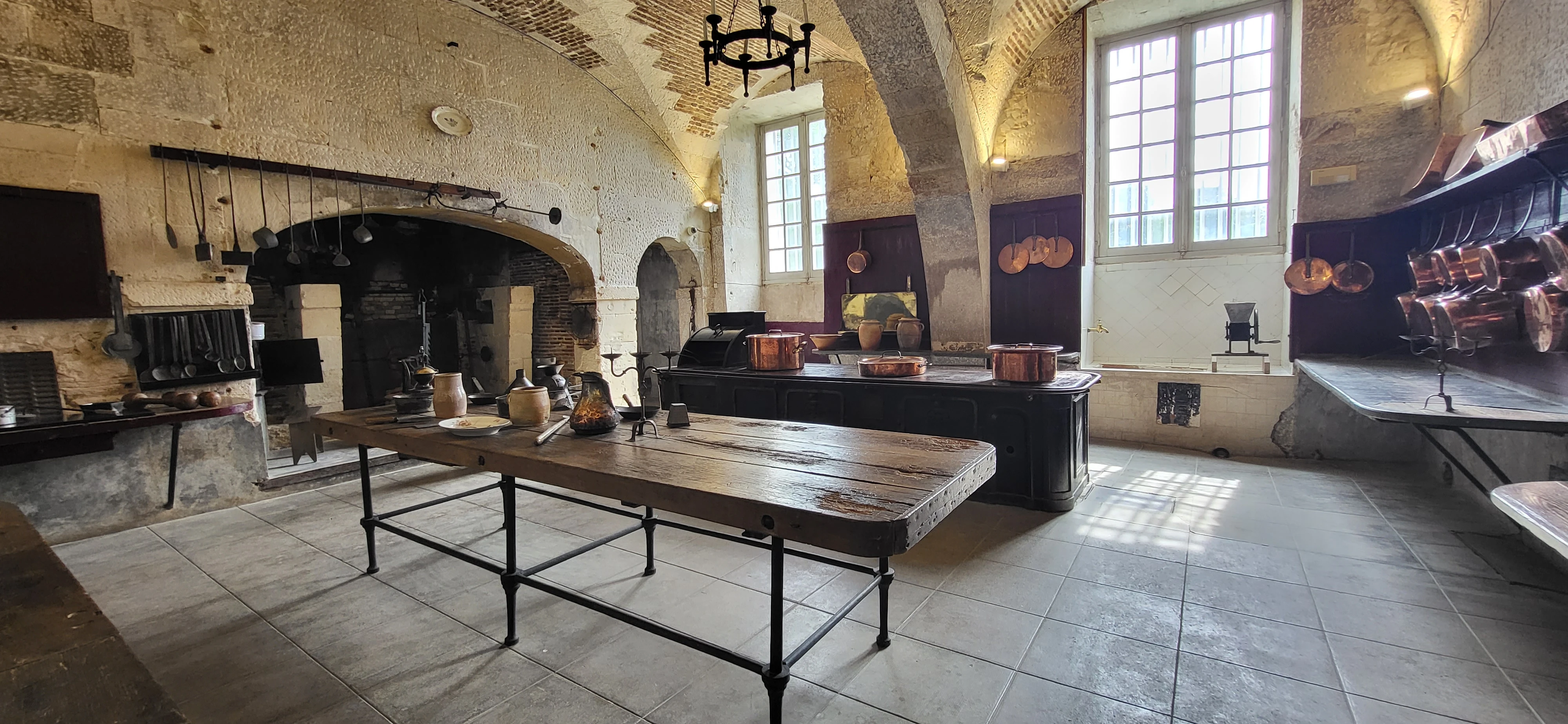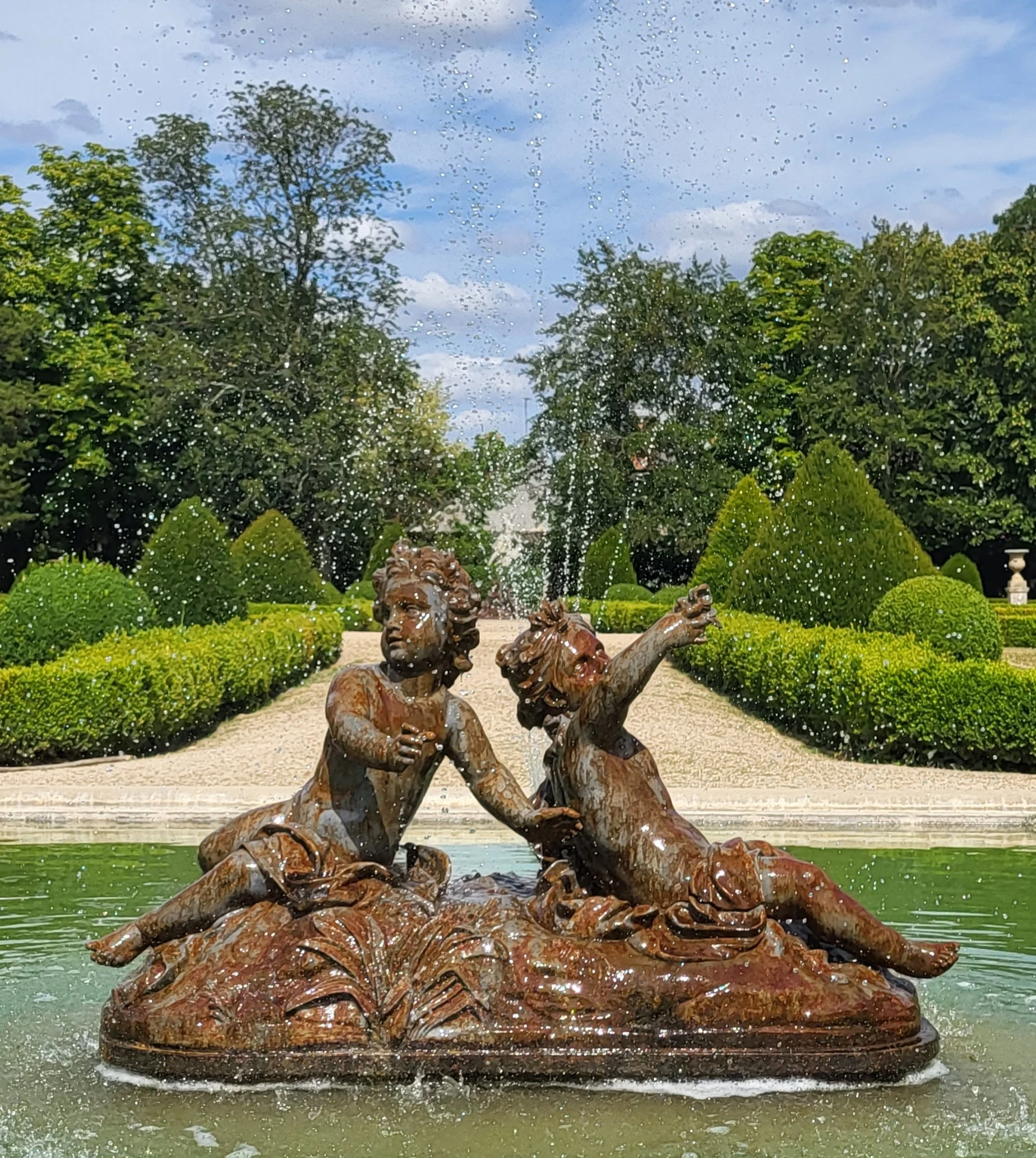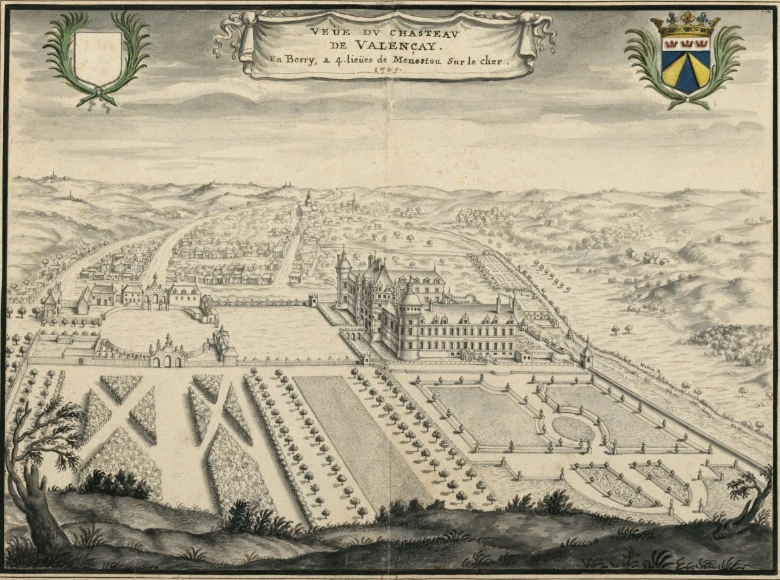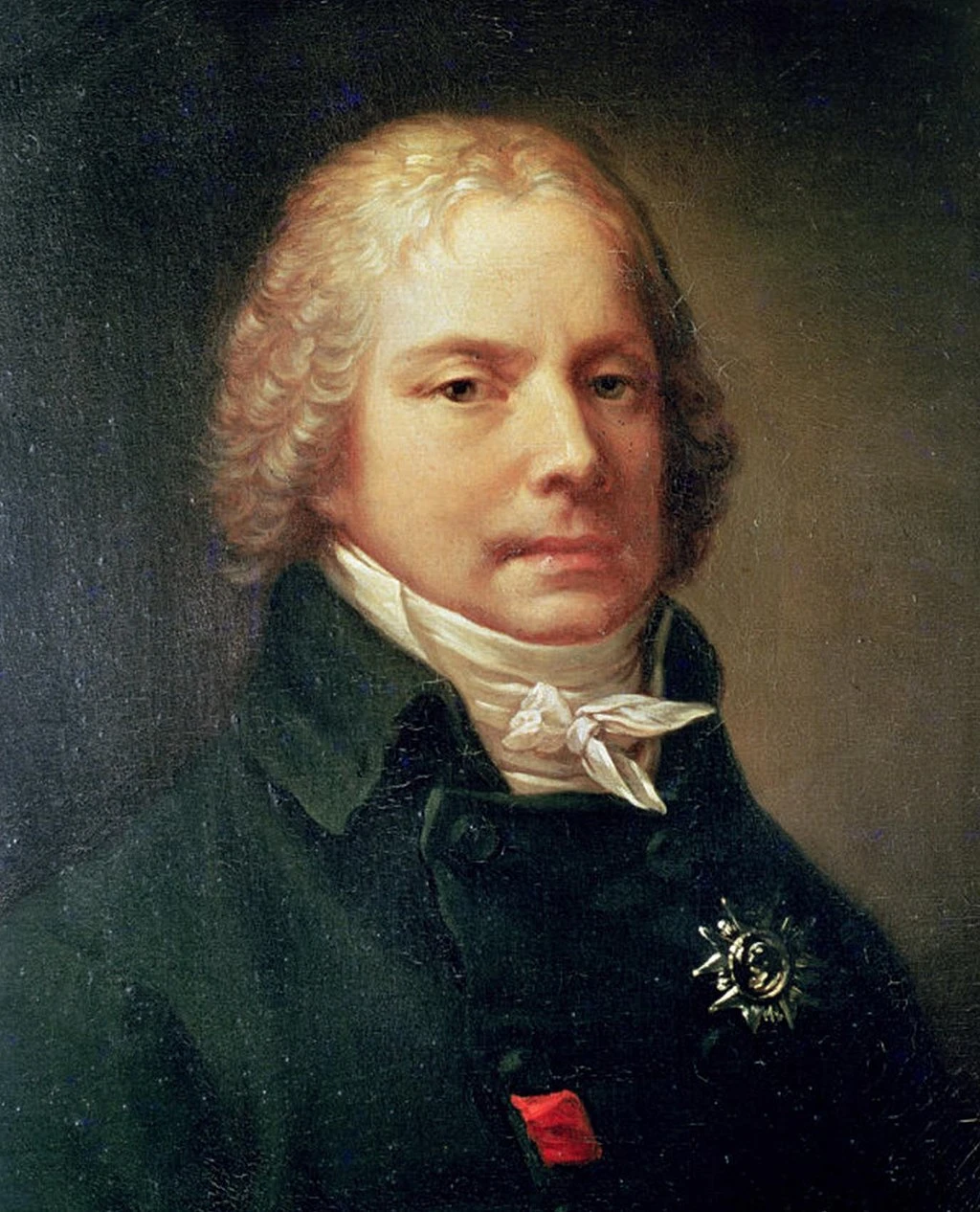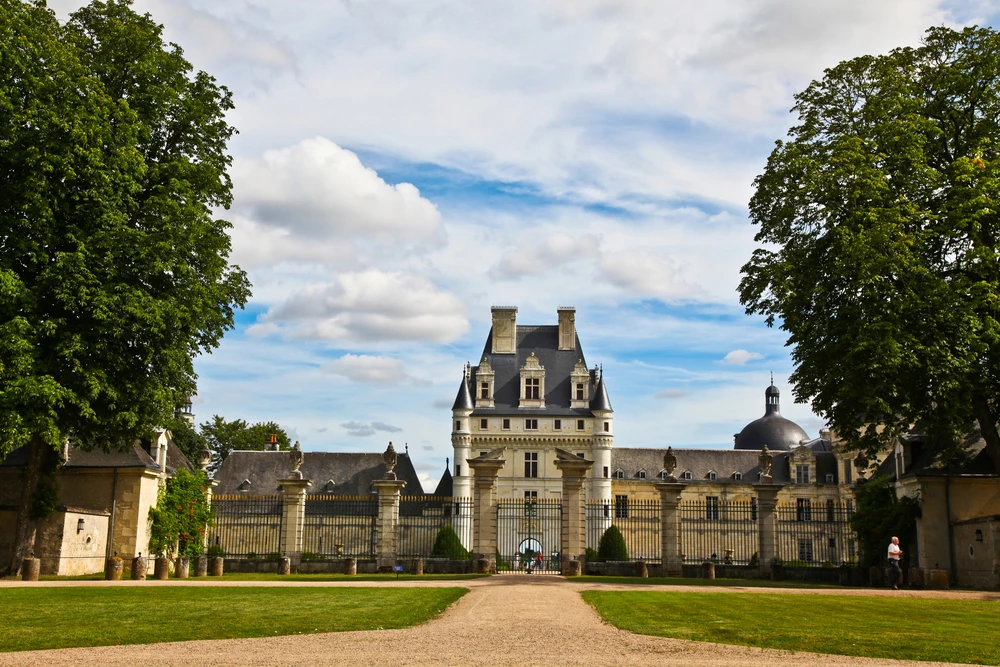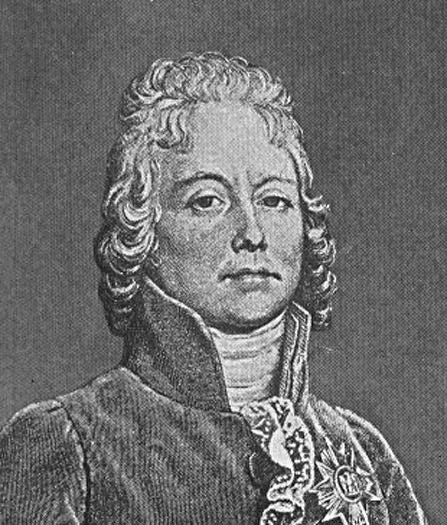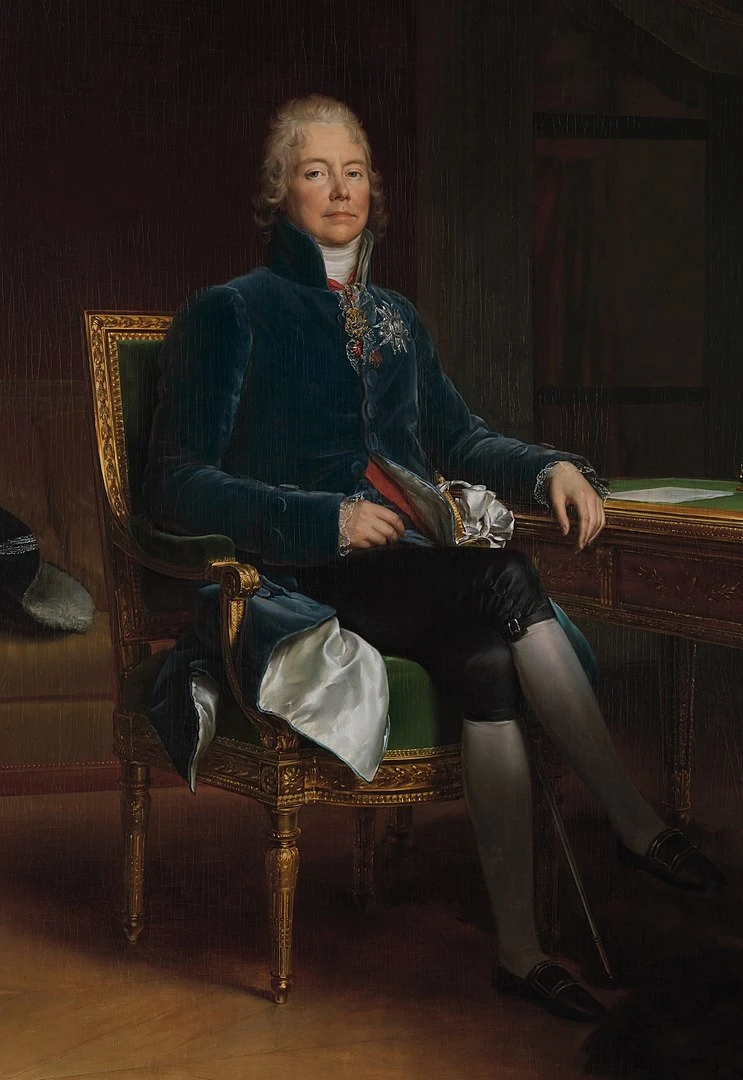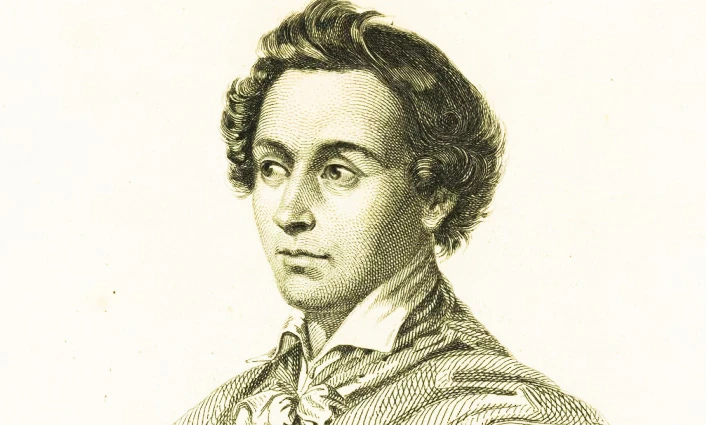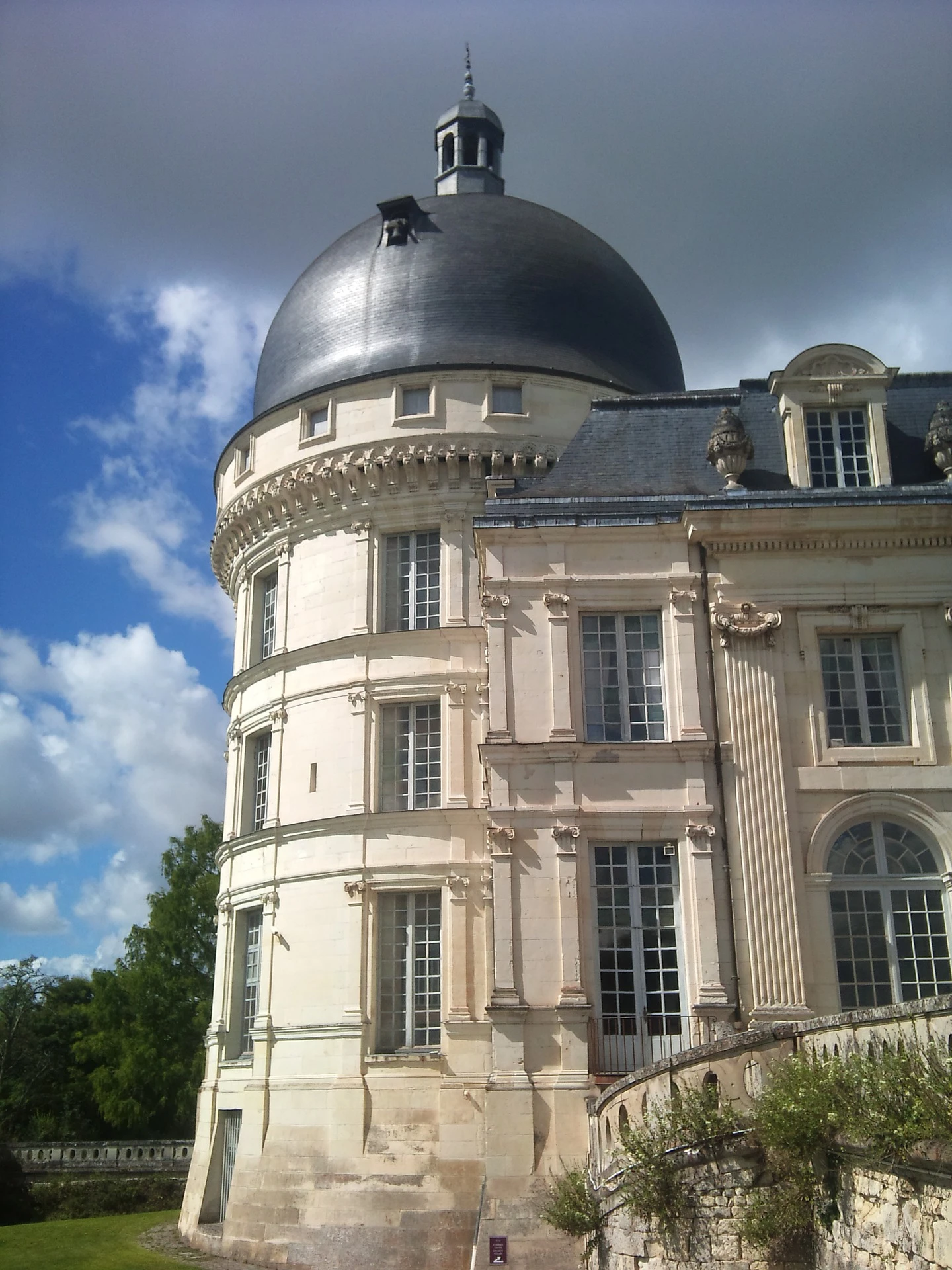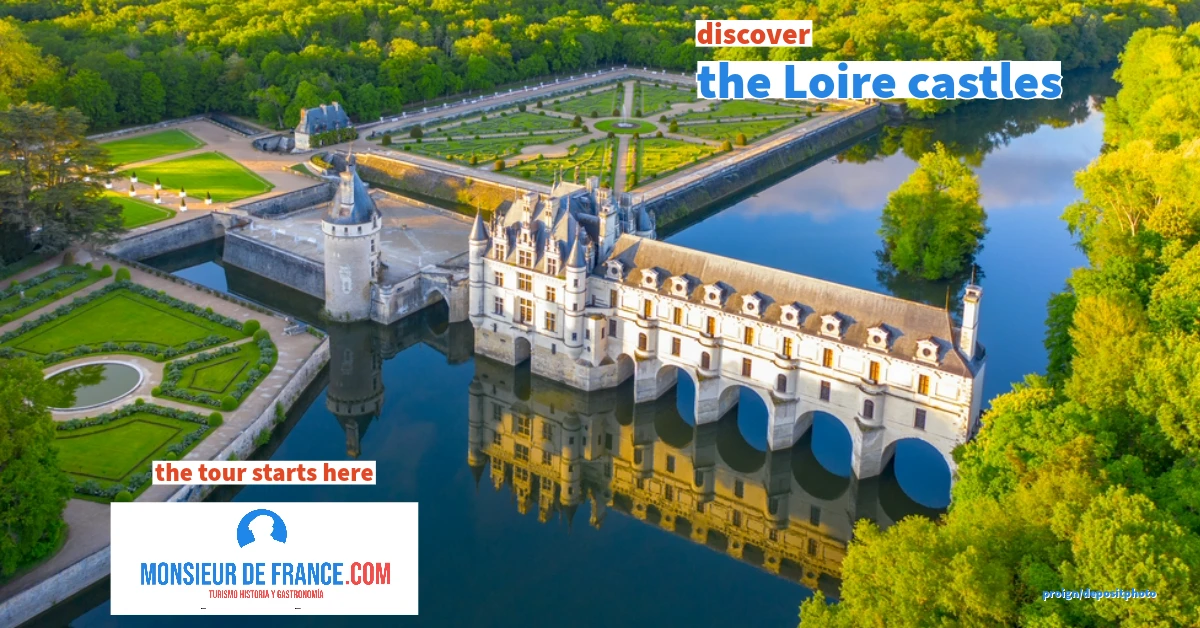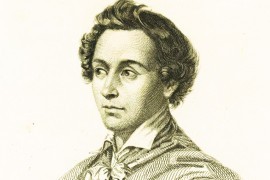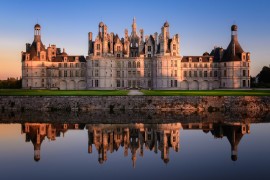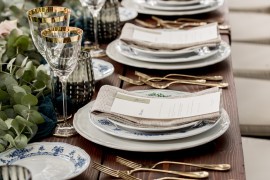There may be some mistranslations in this article, as our translator seems to have abused the good Valençay wine. He's a bit weird...
Discover Valençay Castle
Nearly 90,000 people visited the château in 2019, and it's a magnificent sight to arrive at Valençay château via the long driveway where the outbuildings are located, pick up your ticket and find yourself standing in front of this immense white château lined with massive but beautifully rounded towers. You can clearly see the Renaissance in the touch of folly that makes this place, which could have been austere, so elegant. The eighteenth century is never far away, particularly in the interiors and in the wings it added to the original château. The interior tours are enthralling in their beauty and elegance, and you are treated to a moment in a princely residence in the early 19th century by a person of international stature... And you'll take some fantastic photos!
The park
It's a pleasure to wander through the French garden around Valençay castle. Photo chosen by Monsieurdefrance.com: Jérôme Prod'homme (c)
This is one of the most beautiful places on earth, and no king has a more picturesque park," said George Sand (who lived not far away in the Berry region).
It is an integral part of the estate, as it is in all châteaux, although it has been considerably reduced since the time of Prince de Talleyrand. The park still covers 53 hectares and even includes a forest. There are 25 different types of tree. There are a number of surprises, such as the ice houses and the ballroom. You can take a ride in an electric cart (it costs 15 euros) and you may even come across some deer.
The Duchess's garden is located below Valençay castle. Photo chosen by Monsieurdefrance.com: packshot via depositphotos.com
There are different gardens. The French garden (it has looked like this since 1906 and is the brainchild of Edouard Rocher) which surrounds the residence and, further on, the espaliered "Duchess" garden. It is situated below the château. Opposite, the hunting lodge dates from 1810 and is one of the few of its kind in France. Since 2016, "la grande perspective", inspired by plans from the early 18th century and designed by DPLG architect Noémie Mallet, has been well worth a visit.
Valençay castle surrounded by flowers. Photo chosen by monsieurdefrance.com: Maugli via depositphotos.Com
Valençay Castle itself
This is a superb residence. You will first pass under the pavilion. Follow the signs, which will take you through the pavilion to what used to be the keep and what is still the oldest part of the château: the Renaissance section. You will then pass through the classical wing and discover the quasi-royal interior, which will show you what life was like for the very high aristocracy in the 18th, 19th and 20th centuries.
The interior of the Grand Salon de Talleyrand is a veritable concentration of the "Empire" style. Here, a magnificent mahogany sideboard crowned with bronze torches. Photo chosen by Monsieurdefrance: packshot via depositphotos.
The interiors are magnificent.
As you enter the classical wing, you will discover a number of rooms. There are the ceremonial rooms, such as the Dining Room, which features a magnificent table laid out according to the rules of the art and reminds us that Talleyrand often used meals to negotiate. Talleyrand's magnificent desk, a gift from Napoleon 1st, is also on display. The Valençay interiors are a condensation of the Empire style, with furniture inspired by the Roman Empire, often in mahogany and with carved bronzes. The King of Spain's bedroom is spectacular. The bedroom of the Duchess of Dino is very elegant. I particularly liked the blue salon.
The dining room at Valençay Castle, laid out in the French style, is a reminder that the Prince negotiated a lot at table. It must be said that he was a fine gourmet. Photo chosen by monsieurdefrance.com: packshot via dépositphotos.com
Two other places to see:
The kitchens of Valençay where the chef Antonin Carême worked. Photo chosen by monsieurdefrance.Com: Jérôme Prod'homme (c)
The Treasure Room: the Prince's astonishing collection of walking sticks (nicknamed "the lame devil" because he had a club foot), swords, clothes and objects from other parts of the world for a man whose influence spanned Europe and even the world. A place that is both surprising and highly personal in terms of the tastes and desires of this historic figure.
The kitchens: fairly well reconstructed, paying tribute to the chef Antonin Carême, "cook to kings and king of cooks", who worked here for the Prince de Talleyrand. A short film tells the story.
A brief history of Valençay castle
One of the fountains in the grounds of Valençay castle. Photos selected by monsieurdefrance.com: Jérôme Prod'homme (c)
The origins, the Renaissance and the Age of Enlightenment
The Château de Valençay in the 17th century. You can see the river and, opposite, the park continues and nothing has been built. Today, part of the village of Valençay can be found here. Illustration chosen by monsieurdefrance.com: Gallica.fr BNF.
The area has long been inhabited, as traces of a Gallo-Roman villa have been found. It probably gave its name to the place, which comes from the Latin "valens" meaning "the fort". A wooden fort already existed at the end of the 10th century, but the first written mention of a castle in Valençay dates back to a charter dated 1026, which mentions a certain Bertrand de Valençay. Inherited several times, the castle came into the hands of the d'Estampes family. It was this family that inherited the castle in the Middle Ages and, around 1540, demolished the feudal residence and replaced it with the current Renaissance section, in particular the keep. 100 years later, the family continued to expand and the "House" grew in size. It was to this family that we owe the covering of the towers with their astonishing rounded roofs, the "mullioned" windows and the south gallery, and it was also to this family that the old keep took its current appearance and its name of "pavilion". The work was so extensive that it contributed to the ruin of the family , who ended up selling it at the beginning of the 17th century. The château was considerably renovated and even restructured by Pierre-Charle Legendre de Villemorien (1717-1789), who remodelled the roofs, renovated the south tower and, very entrepreneurial, created a spinning mill and even forges to generate income for the estate. In 1766, the classical wing was completed by the architect Couture. Comfortable and modern for its time, it is the highlight of today's visit. The Château survived the French Revolution rather well , even though it was a difficult time for the Comte de Luçay, who could have been guillotined if his wife hadn't saved him by promoting the forges and spinning mills, which earned the Comte the title of "entrepreneur of the Republic". Which saved him.
Le Prince de Talleyrand.
The portrait of Prince de Talleyrand at the time of the purchase of Valençay in 1809. Illustration chosen by monsieurdefrance.com: Pierre-Paul Prud'hon, Public domain, via Wikimedia Commons. Portrait on display at Valençay Castle
On 7 May 1803, the Comte de Lucay (delighted to have escaped the guillotine) sold his château and estate in Valençais to Prince Charles Maurice de Talleyrand-Périgord (whose astonishing life we remind you of a little later in this article). The Prince made it his "country house" (a vast house!) and had the many damaged areas restored. It should be noted that the Prince's estate included Valençay as well as the châteaux of Luçay and Veuil.He owned them until his death in 1838. A château where he sometimes lived (not always, it has to be said that he was often in Paris and even on the roads of Europe, as he was one of the very active diplomats at the Congress of Vienna in 1815). Minister to Napoleon I, he welcomed the princes of Spain and the legitimate king into exile and golden prison, as they had been replaced by a king chosen by Napoleon. They stayed there for 6 years, from 1809 to 1814, during which time additional work was carried out. In 1816, the Prince moved there much more often, as he was exiled by King Louis XVIII. He stayed there with the Duchess of Dino, who was highly intelligent, cultured and the woman of his life. Famous for his work as a diplomat, but contested because of his light and shade, the Prince de Talleyrand left a good impression on the people of Valençay , as he was responsible for the "charity offices" (where you were given work in order to have enough to eat), free land for the school or the town hall, and a house to educate young girls. It was in Valençay that Talleyrand welcomed the chef Antonin Carême, whom he once asked to cook 300 meals a year using different ingredients and never the same thing twice. The challenge paid off!
From the 19th century to the present day.
By inheritance, the château passed to the de Talleyrand-Périgord family, who notably left the French garden established in 1908. During the Second World War, like many of the surrounding châteaux, such as Chambord, Valençay served as a refuge for numerous works of art from the Louvre, evacuated in 1939 to avoid any risk of destruction in the event of the bombing of Paris. The Venus de Milo, the Victory of Samothrace and the Crown Jewels, among others, stayed at the château. These works of art had a hard time of it, as did the castle itself, since the infamous Das Reich division passed through here in 1944 and overran the village of Valençay following an attack by maquisards. The castle and everything in it had to be destroyed. It took all the persuasiveness of the Prince at the time, and in particular the fact that he held the German title of Duke of Sagan, and that of Gerald Van der Kemp, the future curator of Versailles, to prevent the irreparable destruction of the château and the works in the Louvre. In 1979, the château was bequeathed by Jean Morel, son-in-law of the last Duke of Talleyrand-Périgord. Since then, it has been managed by a mixed syndicate that includes, among others, the Indre department, the Commune of Valençay...
The entrance to Valençay castle. Photo chosen by Monsieurdefrance.com: akulamatiau via depositphotos.
Two destinies have passed through here: Talleyrand and Carême
Who was Prince de Talleyrand?
Engraving by Talleyrand.
Charles Maurice de Talleyrand-Périgord was born on February 1754 in Paris. He is often referred to simply as "Talleyrand". He was a very important figure at the crossroads of the 18th and 19th centuries. Born into a very noble, but very poor, family, he had a clubfoot that forced him to wear walking sticks all his life (they were on display in the château). This clubfoot changed his life because, as the eldest child in his family, he should have inherited the titles and property, but he was downgraded in favour of his younger brother because the clubfoot prevented him from taking up a career in arms, as tradition required of the eldest children of noble families. His family steered him towards religious life. He is a typical man of the Age of Enlightenment. A Don Juan (he was very seductive), a free spirit, he was a freethinker and even an atheist, even though he was ordained a priest and even bishop of Autun, he was noticed during the French Revolution. As a deputy, he was very active. He was responsible for one of the articles of the Declaration of the Rights of Man and of the Citizen in 1789. The article states : "The law is the expression of the general will. [It must be the same for all, whether it protects or punishes". It was in front of him that La Fayette took the oath of office during the Fête de la fédération in Paris on 14 July 1790 (it is in fact this fête that is celebrated as the French bank holidays every year). He was particularly in favour of the Civil Constitution of the Clergy (the secularisation of Church property), which led to the revolt of the Chouans and the Vendéens. In 1792, he fled under cover of a mission to London in view of the way things were going, especially as his name came up in secret documents of Louis XVI.
Illustration chosen by monsieurdefrance.com: Talleyrand in 1808 by the painter François Gérard source wikipedia.
He returned from emigration after the Revolution and continued his political career under the Directoire (1705-1799), becoming a true diplomat as Minister of Foreign Affairs. A great scholar, he was also a member of the Institut de France. Under the Consulate, he was still Minister of Foreign Affairs and began working with the 1st Consul, Bonaparte, the future Emperor Napoleon 1st. Napoleon appointed him Grand Chamberlain when the Empire was established in 1804. The two men subsequently drifted apart, particularly after the invasion of Spain. After becoming Prince of Bénévent in 1806, Talleyrand continued his career. He was head of the provisional government for a few days at the time of the fall of the Empire (1815) and before the Restoration, i.e. the return of the monarchy. It was he who defended France's interests at the Congress of Vienna (1815), the congress that was to decide the future of France, which had been defeated by a coalition that included Austria, Russia and others. He did a marvellous job of emphasising the fact that a weak France would unbalance Europe. It is said that it was thanks to the many meals he gave that Talleyrand won over the various representatives of the victorious states and won their indulgence.
Cartoon depicting Talleyrand with 6 heads, one for each regime he supported. Source: Wikipedia/Wikicommons.
Back in Paris, he was no longer in power when King Louis XVIII, who had given him his title of Prince de Talleyrand, parted company with him. A member of the liberal opposition, he was one of those who pushed Louis Philippe to take power from Louis XVIII's brother, Charles X. This was done during the July Revolution in France. This was done during the July Revolution in 1830. Still very influential, as French ambassador to London, he laid the foundations of the Entente Cordiale, the treaty of friendship that put an end to centuries of conflict between France and Great Britain. This treaty is still relevant today, and is often cited in diplomatic meetings between France and the United Kingdom. In retirement, Talleyrand devoted himself to the château and above all to the village of Valençay. He ended his life in his private hotel in Paris, where King Louis Philippe came to visit him and he drew closer to the Church, the convinced atheist and defrocked priest, to avoid the scandal of a death "without religion". He died on the afternoon of 17 May 1838 . His body, embalmed in the Egyptian style, was brought back to Valençay where he was laid to rest.
Admired by the men in his camp, hated by others who called him "the lame devil" because of his clubfoot, accused of having followed the wind (when in fact he had preceded it, even provoked it), because he was in power under several regimes, Talleyrand was a man of immense intelligence who left his mark on his era like few politicians in the history of France.
Some quotes from Talleyrand :
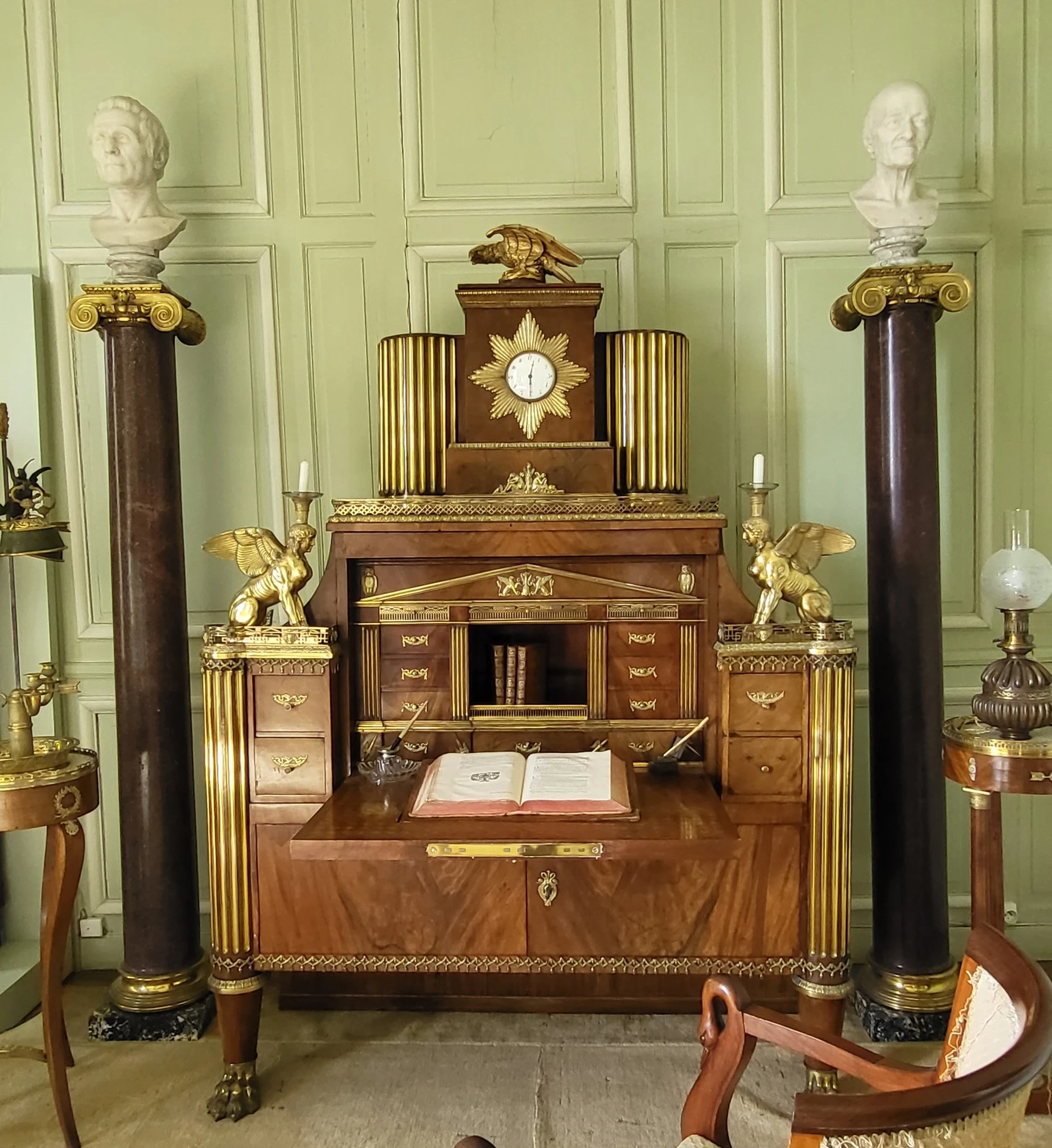 The desk given by Napoleon to Talleyrand and on display at the Château de Valençay. Photo chosen by monsieurdefrance.com: Jérôme Prod'homme (c)
The desk given by Napoleon to Talleyrand and on display at the Château de Valençay. Photo chosen by monsieurdefrance.com: Jérôme Prod'homme (c)
1: "Where so many men have failed: a woman can succeed".
2: "Everything that is excessive is insignificant".
3: "When I examine myself I worry. When I compare myself, I feel reassured".
4: "Those who speak do not know. Those who know do not speak".
5: "What goes without saying goes even better by saying it".
Who was Antonin Carême?
It's an incredible story that Antonin Carême lived here . A little Parisian abandoned by his father, who couldn't feed him, and who thought that little Antonin, being the most resourceful, would manage to survive, lived an exciting life. Not only did the child survive, but he went on to have one of the greatest professional careers in the history of France. We owe him many things in French cuisine, including the words 'chefs', the toque and even the order of dishes in the French meal. Click on his portrait to discover his story.
Valençay: opening times / Prices / Websites.
Timetable :
Valencay Castle is open from 18 March to 12 November. From 10am to 6pm until September, then from 10am to 5pm in October and November.
Prices :
The individual ticket price is 14.50 euros (and well worth it). There is a special PRM and companion rate of 9 euros each, and a reduced rate of 11.50 euros (for students and jobseekers, on presentation of proof).
Guided tours :
They cost 4.90 euros per person .
Please note: this information is non-contractual and dates from 2023. To be sure of your information, visit the official Valençay Castle website .
Websites
The official Château de Valençay website
One of the towers of Valençay Castle. Photo chosen by monsieurdefrance.com: myotal de Pixabay
Valençay : Information / GPS / Geo / Train .
Address / GPS and geography
The château is located at 2 rue de Blois in Valençay (population 1,000) in the Indre department, the historic Berry region and the Centre Val de Loire administrative region. It is 40 minutes from Châteauroux, 1 hour 15 minutes from Tours on the A85 and 2 hours 50 minutes from Paris on the A10.
The village of Valençay is well worth a visit and even a short break. There are plenty of shops. And they make a very good AOC Valençay wine that can be drunk well chilled in summer.
Train
There is a station at Valençay and all the timetables are here .
Aircraft
There is an airfield at Châteauroux (45 minutes from the château) and the nearest airport is Paris Orly (3 hours 30 minutes away).

